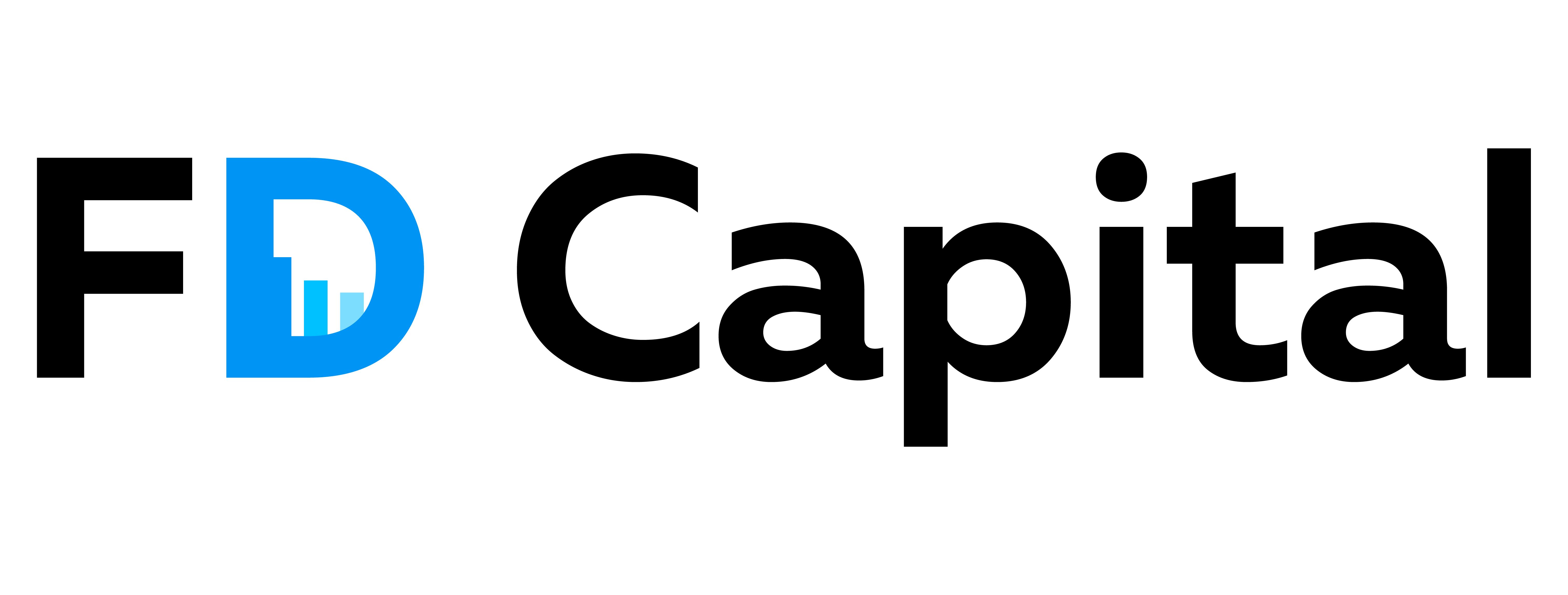Essential Skills for a Money Laundering Reporting Officer: Recruitment Best Practices

Essential Skills for a Money Laundering Reporting Officer: Recruitment Best Practices
Introduction
In today’s complex financial landscape, the role of a Money Laundering Reporting Officer (MLRO) has become increasingly critical. As financial institutions face heightened scrutiny and regulatory requirements, the need for skilled professionals who can navigate the intricacies of anti-money laundering (AML) compliance is paramount. The MLRO is at the forefront of this battle, responsible for ensuring that organizations adhere to legal standards and effectively mitigate the risks associated with financial crimes.
Recruiting the right MLRO is not just about filling a position; it’s about finding a candidate with a unique blend of skills, experience, and ethical fortitude. This article delves into the essential skills that define an effective MLRO and offers best practices for recruiting these indispensable professionals. By understanding the core competencies required and implementing strategic recruitment practices, organizations can better protect themselves against the ever-evolving threat of money laundering.
Understanding the Role of a Money Laundering Reporting Officer (MLRO)
Definition and Importance
A Money Laundering Reporting Officer (MLRO) is a key figure within an organization responsible for overseeing the company’s anti-money laundering (AML) policies and procedures. The MLRO ensures that the organization complies with relevant laws and regulations designed to prevent money laundering and terrorist financing. This role is crucial in safeguarding the financial system’s integrity and maintaining the organization’s reputation.
Key Responsibilities
Compliance Oversight
The MLRO is responsible for ensuring that the organization adheres to all applicable AML laws and regulations. This includes staying updated on legislative changes and ensuring that the company’s policies and procedures are in line with current legal requirements.
Reporting Suspicious Activities
One of the primary duties of an MLRO is to identify and report suspicious activities to the relevant authorities. This involves analyzing transactions, monitoring customer behavior, and maintaining records of all reports submitted.
Risk Assessment
The MLRO conducts regular risk assessments to identify potential vulnerabilities within the organization. This includes evaluating the effectiveness of existing controls and implementing new measures to mitigate identified risks.
Training and Awareness
The MLRO is tasked with developing and delivering AML training programs for employees. This ensures that staff members are aware of their responsibilities and can recognize and report suspicious activities.
Skills and Qualifications
Analytical Skills
An effective MLRO must possess strong analytical skills to scrutinize complex financial transactions and identify patterns indicative of money laundering.
Attention to Detail
Attention to detail is critical for an MLRO, as even minor oversights can lead to significant compliance breaches and legal repercussions.
Communication Skills
The MLRO must have excellent communication skills to effectively convey AML policies and procedures to staff and liaise with regulatory authorities.
Regulatory Knowledge
A deep understanding of AML laws and regulations is essential. The MLRO must stay informed about changes in legislation and ensure that the organization remains compliant.
Challenges Faced
Evolving Regulations
The regulatory landscape is constantly changing, and the MLRO must keep up with new laws and guidelines to ensure ongoing compliance.
Technological Advancements
With the rise of digital currencies and online transactions, the MLRO must adapt to new technologies and develop strategies to monitor and mitigate associated risks.
Internal Resistance
Implementing AML policies can sometimes meet resistance within the organization. The MLRO must navigate these challenges and foster a culture of compliance.
Best Practices for Effectiveness
Continuous Education
The MLRO should engage in continuous education to stay abreast of the latest developments in AML regulations and best practices.
Collaboration
Collaboration with other departments, such as legal, compliance, and IT, is essential for the MLRO to effectively manage AML risks.
Use of Technology
Leveraging advanced AML software and tools can enhance the MLRO’s ability to detect and report suspicious activities efficiently.
Regular Audits
Conducting regular internal audits helps ensure that AML policies and procedures are being followed and identifies areas for improvement.
Key Responsibilities of an MLRO
Compliance with Regulatory Requirements
An MLRO (Money Laundering Reporting Officer) is primarily responsible for ensuring that the organization complies with all relevant anti-money laundering (AML) regulations and laws. This involves staying updated with the latest regulatory changes and ensuring that the company’s policies and procedures are aligned with these requirements. The MLRO must also ensure that the organization adheres to international standards and best practices in AML compliance.
Development and Implementation of AML Policies
The MLRO is tasked with developing, implementing, and maintaining the organization’s AML policies and procedures. This includes creating a comprehensive AML program that outlines the steps the organization will take to prevent, detect, and report money laundering activities. The MLRO must ensure that these policies are effectively communicated to all employees and that they are regularly reviewed and updated to reflect any changes in the regulatory environment.
Risk Assessment and Management
Conducting regular risk assessments is a critical responsibility of the MLRO. This involves identifying and evaluating the money laundering risks associated with the organization’s products, services, customers, and geographic locations. The MLRO must develop and implement risk mitigation strategies to address identified risks and ensure that the organization has robust controls in place to manage these risks effectively.
Monitoring and Reporting Suspicious Activities
The MLRO is responsible for monitoring the organization’s transactions and activities to identify any suspicious behavior that may indicate money laundering. This includes using advanced monitoring systems and analytical tools to detect unusual patterns or anomalies. When suspicious activities are identified, the MLRO must investigate further and, if necessary, file Suspicious Activity Reports (SARs) with the relevant authorities in a timely manner.
Training and Awareness Programs
Ensuring that all employees are aware of their AML responsibilities is another key responsibility of the MLRO. This involves developing and delivering regular training programs to educate staff about the organization’s AML policies, the importance of compliance, and how to identify and report suspicious activities. The MLRO must also ensure that new employees receive appropriate AML training as part of their onboarding process.
Liaison with Regulatory Bodies and Law Enforcement
The MLRO acts as the primary point of contact between the organization and regulatory bodies, as well as law enforcement agencies. This involves responding to requests for information, participating in regulatory audits and inspections, and providing necessary documentation and reports. The MLRO must also maintain open lines of communication with these external entities to ensure that the organization remains compliant with all AML requirements.
Internal Reporting and Communication
The MLRO must ensure that there is effective internal communication regarding AML matters within the organization. This includes reporting to senior management and the board of directors on the status of the AML program, any identified risks, and the results of internal audits and reviews. The MLRO must also ensure that any significant AML issues are promptly escalated to the appropriate level of management for resolution.
Record Keeping and Documentation
Maintaining accurate and comprehensive records is a crucial responsibility of the MLRO. This includes keeping detailed records of all AML-related activities, such as risk assessments, training sessions, internal audits, and reports filed with regulatory authorities. The MLRO must ensure that these records are securely stored and easily accessible for review by internal and external auditors.
Continuous Improvement of the AML Program
The MLRO is responsible for continuously evaluating and improving the organization’s AML program. This involves staying informed about emerging money laundering trends and techniques, as well as advancements in AML technology and best practices. The MLRO must regularly review and update the organization’s AML policies and procedures to ensure they remain effective in combating money laundering activities.
Essential Skills and Qualifications for an MLRO
Technical Knowledge and Expertise
Understanding of AML Regulations
An MLRO must have a comprehensive understanding of Anti-Money Laundering (AML) regulations and legislation. This includes familiarity with local, national, and international laws, such as the USA PATRIOT Act, the EU’s AML Directives, and the Financial Action Task Force (FATF) recommendations.
Risk Management
Proficiency in risk management is crucial. An MLRO should be able to identify, assess, and mitigate risks associated with money laundering and terrorist financing. This involves developing and implementing risk-based approaches to AML compliance.
Financial Systems and Transactions
A deep understanding of financial systems, products, and transactions is essential. This includes knowledge of banking operations, payment systems, and various financial instruments that could be exploited for money laundering.
Analytical and Investigative Skills
Data Analysis
Strong analytical skills are necessary to scrutinize large volumes of data for suspicious activities. An MLRO should be adept at using data analytics tools and techniques to detect patterns and anomalies indicative of money laundering.
Investigative Techniques
Experience in investigative techniques is important for conducting thorough investigations into suspicious activities. This includes interviewing skills, evidence gathering, and report writing.
Communication and Interpersonal Skills
Reporting and Documentation
Effective communication skills are essential for preparing clear and concise reports for senior management and regulatory bodies. An MLRO must be able to document findings and recommendations accurately.
Stakeholder Engagement
Interpersonal skills are vital for engaging with various stakeholders, including internal teams, regulators, and law enforcement agencies. An MLRO should be able to build and maintain strong relationships to facilitate cooperation and information sharing.
Leadership and Management Skills
Team Leadership
Leadership skills are important for managing the AML compliance team. This includes setting objectives, providing guidance, and ensuring that team members are adequately trained and motivated.
Project Management
Project management skills are necessary for overseeing the implementation of AML programs and initiatives. This involves planning, executing, and monitoring projects to ensure they are completed on time and within budget.
Ethical and Professional Standards
Integrity and Ethics
An MLRO must demonstrate high ethical standards and integrity. This includes a commitment to compliance and a strong sense of responsibility to prevent and detect money laundering activities.
Continuous Learning
A commitment to continuous learning and professional development is essential. An MLRO should stay updated with the latest developments in AML regulations, technologies, and best practices through ongoing education and training.
Relevant Qualifications
Educational Background
A degree in finance, law, business administration, or a related field is often required. Advanced degrees or certifications in AML, such as the Certified Anti-Money Laundering Specialist (CAMS) or the International Diploma in Anti Money Laundering, are highly regarded.
Professional Experience
Relevant professional experience in AML, compliance, risk management, or a related field is crucial. This includes hands-on experience in developing and implementing AML policies and procedures.
Certifications and Training
Certifications from recognized bodies, such as the Association of Certified Anti-Money Laundering Specialists (ACAMS) or the International Compliance Association (ICA), are valuable. Ongoing training and professional development in AML and compliance are also important to maintain expertise and stay current with regulatory changes.
Recruitment Strategies for Hiring an MLRO
Define the Role and Responsibilities
Clearly outline the specific duties and responsibilities of the Money Laundering Reporting Officer (MLRO). This includes understanding regulatory requirements, overseeing anti-money laundering (AML) policies, and ensuring compliance with relevant laws. A well-defined job description helps attract candidates with the right expertise and experience.
Identify Key Skills and Qualifications
Identify the essential skills and qualifications required for the MLRO position. These may include:
- In-depth knowledge of AML regulations and compliance requirements
- Strong analytical and investigative skills
- Excellent communication and reporting abilities
- Experience with risk management and mitigation
- Relevant certifications such as CAMS (Certified Anti-Money Laundering Specialist)
Leverage Professional Networks
Utilize professional networks and industry associations to find potential candidates. Engage with AML and compliance forums, attend industry conferences, and participate in webinars to connect with professionals who have the necessary expertise.
Utilize Specialized Recruitment Agencies
Partner with recruitment agencies that specialize in compliance and financial crime roles. These agencies have access to a pool of qualified candidates and can help streamline the hiring process by pre-screening applicants based on your specific requirements.
Conduct Thorough Background Checks
Perform comprehensive background checks to verify the credentials and experience of potential candidates. This includes checking professional references, verifying certifications, and reviewing past employment history to ensure the candidate has a proven track record in AML compliance.
Assess Cultural Fit
Evaluate how well the candidate aligns with your organization’s culture and values. An MLRO must work closely with various departments, so it’s crucial to ensure they can collaborate effectively and uphold the company’s ethical standards.
Implement a Rigorous Interview Process
Design a multi-stage interview process that includes:
- Initial screening interviews to assess basic qualifications and interest
- Technical interviews to evaluate AML knowledge and problem-solving abilities
- Behavioral interviews to gauge communication skills and cultural fit
- Final interviews with senior management to ensure alignment with organizational goals
Offer Competitive Compensation
Provide a competitive salary and benefits package to attract top talent. Consider offering additional incentives such as professional development opportunities, flexible working arrangements, and performance-based bonuses to make the role more appealing.
Promote Internal Talent
Consider promoting from within the organization. Internal candidates are already familiar with the company’s operations and culture, and they may have the necessary skills and experience to step into the MLRO role with minimal transition time.
Continuous Professional Development
Encourage continuous professional development for the MLRO. Support their participation in training programs, certification courses, and industry conferences to keep their skills and knowledge up-to-date with evolving AML regulations and best practices.
Training and Development for MLROs
Regulatory Knowledge
Understanding Legal Frameworks
MLROs must have a comprehensive understanding of the legal frameworks governing money laundering and financial crimes. This includes familiarity with local, national, and international regulations such as the Bank Secrecy Act (BSA), the USA PATRIOT Act, and the European Union’s Anti-Money Laundering Directives (AMLD). Training programs should cover the intricacies of these laws, their application, and the penalties for non-compliance.
Staying Updated with Regulatory Changes
The regulatory landscape is constantly evolving. MLROs need to stay updated with the latest changes and amendments to relevant laws and regulations. Regular training sessions, webinars, and workshops can help MLROs keep abreast of new developments and ensure that their compliance programs are up-to-date.
Risk Management Skills
Identifying and Assessing Risks
MLROs should be adept at identifying potential money laundering risks within their organization. Training should focus on risk assessment methodologies, including how to evaluate the likelihood and impact of various risks. This involves understanding the organization’s products, services, customer base, and geographical exposure.
Implementing Risk Mitigation Strategies
Once risks are identified, MLROs must implement effective mitigation strategies. Training should cover the development and execution of risk management plans, including the use of technology and data analytics to monitor and mitigate risks. Practical case studies and simulations can be useful in this regard.
Analytical and Investigative Skills
Data Analysis Techniques
MLROs need strong analytical skills to interpret complex data and identify suspicious activities. Training should include advanced data analysis techniques, such as statistical analysis, data mining, and machine learning. These skills are crucial for detecting patterns and anomalies that may indicate money laundering.
Conducting Investigations
Effective investigation skills are essential for MLROs. Training should cover the entire investigation process, from initial detection to reporting. This includes interviewing techniques, evidence collection, and documentation. Role-playing exercises and real-world scenarios can enhance these skills.
Communication and Reporting
Internal Communication
MLROs must communicate effectively with various stakeholders within the organization, including senior management, compliance teams, and operational staff. Training should focus on developing clear and concise communication skills, as well as the ability to present complex information in an understandable manner.
External Reporting
MLROs are responsible for reporting suspicious activities to external authorities, such as financial intelligence units (FIUs). Training should cover the requirements and procedures for filing Suspicious Activity Reports (SARs) and other regulatory filings. This includes understanding the timelines, formats, and content required for these reports.
Technological Proficiency
Familiarity with AML Software
MLROs should be proficient in using Anti-Money Laundering (AML) software and tools. Training should include hands-on experience with popular AML systems, such as transaction monitoring software, customer due diligence (CDD) tools, and sanctions screening solutions. This ensures that MLROs can effectively leverage technology to enhance their compliance efforts.
Cybersecurity Awareness
With the increasing prevalence of cybercrime, MLROs must also be aware of cybersecurity threats and best practices. Training should cover the basics of cybersecurity, including how to protect sensitive information, recognize phishing attempts, and respond to data breaches. This knowledge is crucial for safeguarding the organization’s financial and personal data.
Continuous Professional Development
Certification Programs
Pursuing professional certifications can enhance an MLRO’s credibility and expertise. Training should encourage MLROs to obtain certifications such as the Certified Anti-Money Laundering Specialist (CAMS) or the International Diploma in Anti Money Laundering (ICA). These programs provide in-depth knowledge and are recognized globally.
Ongoing Education
The field of anti-money laundering is dynamic, requiring continuous learning and development. Training programs should promote ongoing education through seminars, conferences, and online courses. Encouraging MLROs to participate in industry forums and networks can also facilitate knowledge sharing and professional growth.
Challenges in Recruiting and Retaining MLROs
High Demand and Limited Supply
The role of a Money Laundering Reporting Officer (MLRO) is critical in ensuring compliance with anti-money laundering (AML) regulations. However, the demand for qualified MLROs far exceeds the supply. This imbalance creates a highly competitive market, making it difficult for organizations to attract and retain top talent. The scarcity of experienced professionals means that MLROs often receive multiple job offers, giving them the leverage to negotiate better terms or move to organizations that offer more attractive packages.
Specialized Skill Set
MLROs require a unique combination of skills, including deep knowledge of AML laws and regulations, analytical abilities, and strong ethical standards. Finding candidates who possess this specialized skill set is challenging. Many organizations struggle to identify individuals who not only have the technical expertise but also the ability to navigate complex regulatory environments and make sound judgments under pressure.
Regulatory Changes
The regulatory landscape for AML is constantly evolving. MLROs must stay updated with the latest changes in laws and regulations, which requires continuous learning and adaptation. This dynamic environment can be overwhelming for both new and experienced MLROs, leading to burnout and high turnover rates. Organizations must invest in ongoing training and development to keep their MLROs well-informed and capable of handling new regulatory challenges.
High-Stress Environment
The role of an MLRO is inherently stressful. They are responsible for identifying and reporting suspicious activities, which can have significant legal and financial implications for the organization. The pressure to ensure compliance and avoid penalties can lead to high levels of stress and job dissatisfaction. This stress is compounded by the need to balance regulatory requirements with business objectives, making it difficult to retain MLROs in the long term.
Ethical Dilemmas
MLROs often face ethical dilemmas, such as deciding whether to report suspicious activities that could harm the organization’s reputation or relationships with clients. These ethical challenges can create internal conflicts and stress, making the role less appealing to potential candidates. Organizations must foster a culture of integrity and provide support to MLROs in navigating these ethical complexities.
Compensation and Benefits
Given the high demand for MLROs, competitive compensation and benefits are crucial for attracting and retaining talent. However, not all organizations are willing or able to offer the financial packages that top MLROs expect. This disparity can make it difficult for smaller firms or those with limited budgets to compete with larger, more financially robust organizations. Ensuring that compensation packages are aligned with industry standards is essential for retaining skilled MLROs.
Career Progression
Career progression opportunities for MLROs can be limited. The specialized nature of the role means that there are fewer upward mobility options compared to other positions within the organization. This lack of clear career paths can lead to job dissatisfaction and higher turnover rates. Organizations need to create structured career development plans and provide opportunities for MLROs to advance within the company or diversify their skill sets.
Organizational Support
Effective MLROs require strong support from senior management and other departments within the organization. Without this support, MLROs may find it challenging to implement necessary compliance measures and foster a culture of compliance. Lack of organizational support can lead to frustration and job dissatisfaction, making it difficult to retain MLROs. Ensuring that MLROs have the resources and backing they need is crucial for their success and retention.
Geographic Constraints
The availability of qualified MLROs can vary significantly by region. Organizations in areas with a limited talent pool may find it particularly challenging to recruit and retain MLROs. Geographic constraints can also impact the willingness of candidates to relocate, especially if the new location does not offer comparable living standards or career opportunities for their families. Remote work options and relocation incentives can help mitigate these challenges.
Conclusion
Understanding the Role of a Money Laundering Reporting Officer (MLRO)
The role of an MLRO is pivotal in ensuring that financial institutions comply with anti-money laundering (AML) regulations. This position requires a deep understanding of regulatory frameworks, risk management, and the ability to identify and report suspicious activities.
Key Responsibilities of an MLRO
An MLRO is responsible for developing and implementing AML policies, conducting risk assessments, and ensuring that the organization adheres to legal requirements. They must also liaise with regulatory bodies, provide training to staff, and maintain up-to-date knowledge of AML laws and trends.
Essential Skills and Qualifications for an MLRO
Critical skills for an MLRO include analytical thinking, attention to detail, and strong communication abilities. Qualifications often include a background in finance, law, or compliance, along with certifications such as CAMS (Certified Anti-Money Laundering Specialist).
Recruitment Strategies for Hiring an MLRO
Effective recruitment strategies involve clearly defining the role and its requirements, utilizing specialized recruitment agencies, and conducting thorough interviews to assess candidates’ expertise and cultural fit. Leveraging professional networks and industry events can also help identify potential candidates.
Training and Development for MLROs
Ongoing training and development are crucial for MLROs to stay current with evolving AML regulations and best practices. This can include attending workshops, obtaining advanced certifications, and participating in industry conferences.
Challenges in Recruiting and Retaining MLROs
Recruiting and retaining MLROs can be challenging due to the specialized nature of the role and the high demand for qualified professionals. Organizations must offer competitive compensation, opportunities for career advancement, and a supportive work environment to attract and retain top talent.
Related posts:

Adrian Lawrence FCA with over 25 years of experience as a finance leader and a Chartered Accountant, BSc graduate from Queen Mary College, University of London.
I help my clients achieve their growth and success goals by delivering value and results in areas such as Financial Modelling, Finance Raising, M&A, Due Diligence, cash flow management, and reporting. I am passionate about supporting SMEs and entrepreneurs with reliable and professional Chief Financial Officer or Finance Director services.












